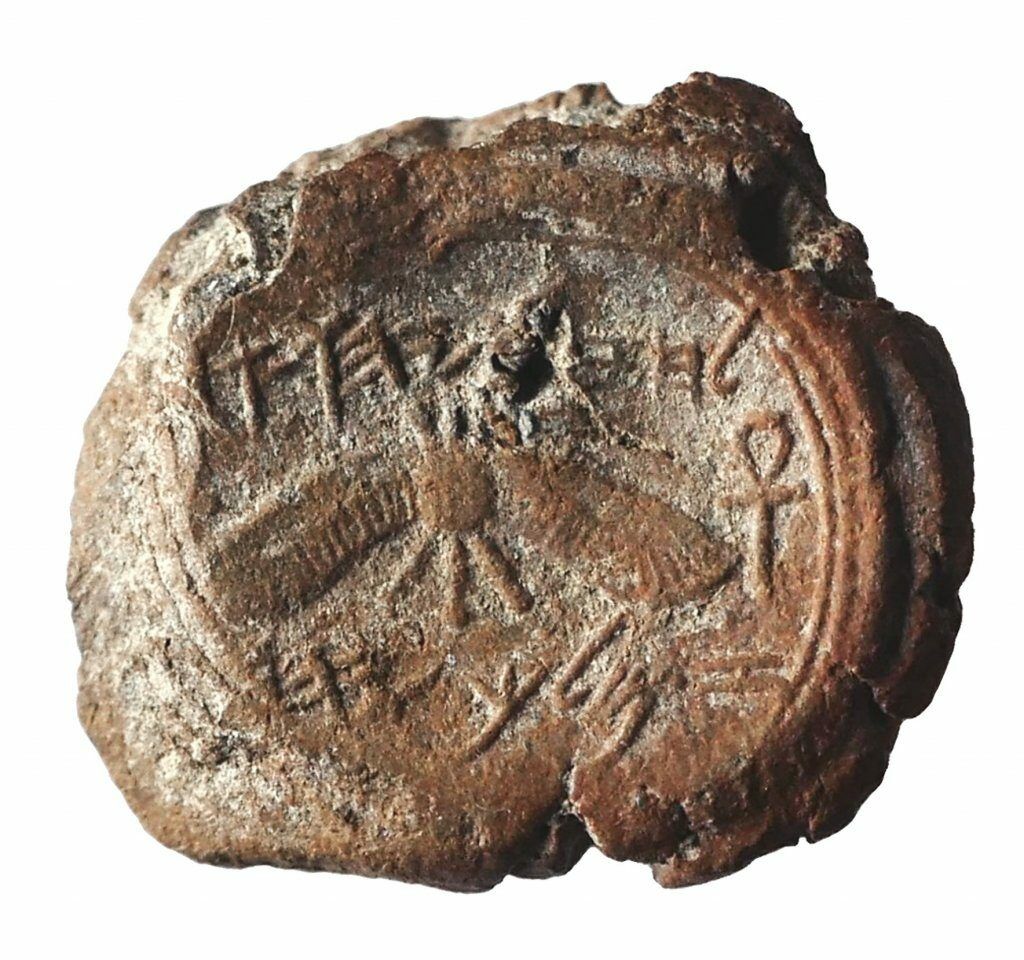Judah’s eighth-century b.c.e. King Hezekiah is well known from archaeology, as well as the Bible. His name is mentioned on the prisms of Assyrian King Sennacherib, as well as on several bullae, recovered via excavation or on the antiquities market.

Yet for not only Hezekiah in particular, but the kings of Judah in general, there has been one thing missing: “monumental”-style inscriptions, or stelae, of the sort well known and preserved in the likes of Assyria, Babylon and Egypt. Inscriptions that have thus far been unveiled naming biblical kings of Israel and Judah have largely been of the “miniature” variety—royal seal stamps, or bullae, such as those referencing Jeroboam, Uzziah, Jotham, Ahaz and Hezekiah. As such, a prevailing belief has been that the kings of Judah and Israel did not have “monumental”-style inscriptions to record their own achievements.
Now, a new discovery (or rather, a somewhat old discovery reexamined) changes that picture.
In 2007, a limestone slab was discovered during the excavations of the Gihon Spring area by Eli Shukron and Ronny Reich. The hand-sized fragment (around 14 x 10 x 5 cm) contains two broken lines of text, of four large letters each. Despite being published the following year, the full potential of the inscription was not immediately established—and a reanalysis of the inscription has led to the conclusion that this inscription actually bears the name of Hezekiah.

This new conclusion was reached by Shukron, together with epigrapher Prof. Gershon Galil, thanks in part to the use of new rti imagery of the stele. The first line is reconstructed as ח]זקיה]/[H]zqyh/[He]zekiah (with the initial letter “h/ח” missing). The second line is reconstructed as the word “pool,” Hebrew bricha, (again with the initial letter having been broken off, thus ב]רכה]). Of course, Hezekiah is noted several times throughout the Hebrew Bible in regard to the construction of pools and water works. Further, the discovery was made at just such a “pool” location.
2 Kings 20:20-21 read, in “in memoriam” summation of the reign of Hezekiah: “Now the rest of the acts of Hezekiah, and all his might, and how he made the pool, and the conduit [“Hezekiah’s tunnel”], and brought water into the city, are they not written in the book of the chronicles of the kings of Judah? And Hezekiah slept with his fathers; and Manasseh his son reigned in his stead.”
This “new” inscription has further been linked with a fragment (below right) found by famous archaeologist Yigal Shiloh in 1978, somewhat further to the south of the Gihon Spring. The stone and lettering are of the same type. This text, again fragmentary, includes the word “seventeen/seventeenth”—as such, when put together with the above-mentioned monument, it may thus identify the inscription as relating to Hezekiah’s seventeenth year of reign (thus circa 709 b.c.e.—Hezekiah reigned for a total of 29 years—2 Kings 18:2).

The researchers posit that this shattered inscription may be the result of damnatio memoriae (Latin for “condemnation of memory”)—a typical practice of later rulers who opposed their forebears. Manasseh, Hezekiah’s son, famously rejected his father’s worship of God and pattern of rule for the first part of his reign.
This new discovery is only now breaking, primarily in Hebrew sources: The below video is an interview (in Hebrew) with Galil and Shukron about the discovery.
In a Facebook post about the discovery, Galil writes (translation from Hebrew):
The Israelite kings were remembered in Assyrian, Babylonian, Aramean and Moabite inscriptions and also on Hebrew stamps—but this is the first time that a fraction of a monumental Hebrew royal address has been decoded, mentioning the name of the king whose achievements were carried out. The discovery … reveals that before the eyes of the authors of the historical biblical texts stood monumental royal writings, which were connected by the authors at the time of the kings mentioned in the Bible.
Indeed, the received wisdom has been that the kings of Judah must not have utilized monumental inscriptions (somewhat unusual, given the manner of grandeur spoken of in the Bible for various kings). One natural response to this theory is the classic line that absence of evidence is not evidence of absence. In addition, Jerusalem stands as surely one of the most attacked, demolished, reconstructed and re-demolished cities on Earth—thus directly affecting preservation of remains. (In the classic words of Eric H. Cline’s Jerusalem Besieged, the city has been totally “destroyed at least twice, besieged 23 times, attacked an additional 52 times, and captured and recaptured 44 times.”)
Now, though—among the fragments of Jerusalem’s remains—we have a preserved fraction of what must indeed have been a “monumental”-style inscription, commemorating one of Judah’s greatest kings. How many more may be awaiting discovery—or already discovered, awaiting full realization?
Editor’s note: In a new development (rather reminiscent of the problematic “Tower of Babel” confounding of languages!), since the release of this discovery, epigrapher Dr. Pieter Gert van der Veen has highlighted via Facebook his publication (“unfortunately in German”) of largely the same conclusion about Hezekiah’s identification on the artifact, in the 2009 Studium Integrale Journal 16 (pp. 51-52). His article was entitled “König Hiskia in einer neuen Inschrift aus Jerusalem?” It can be found here.

